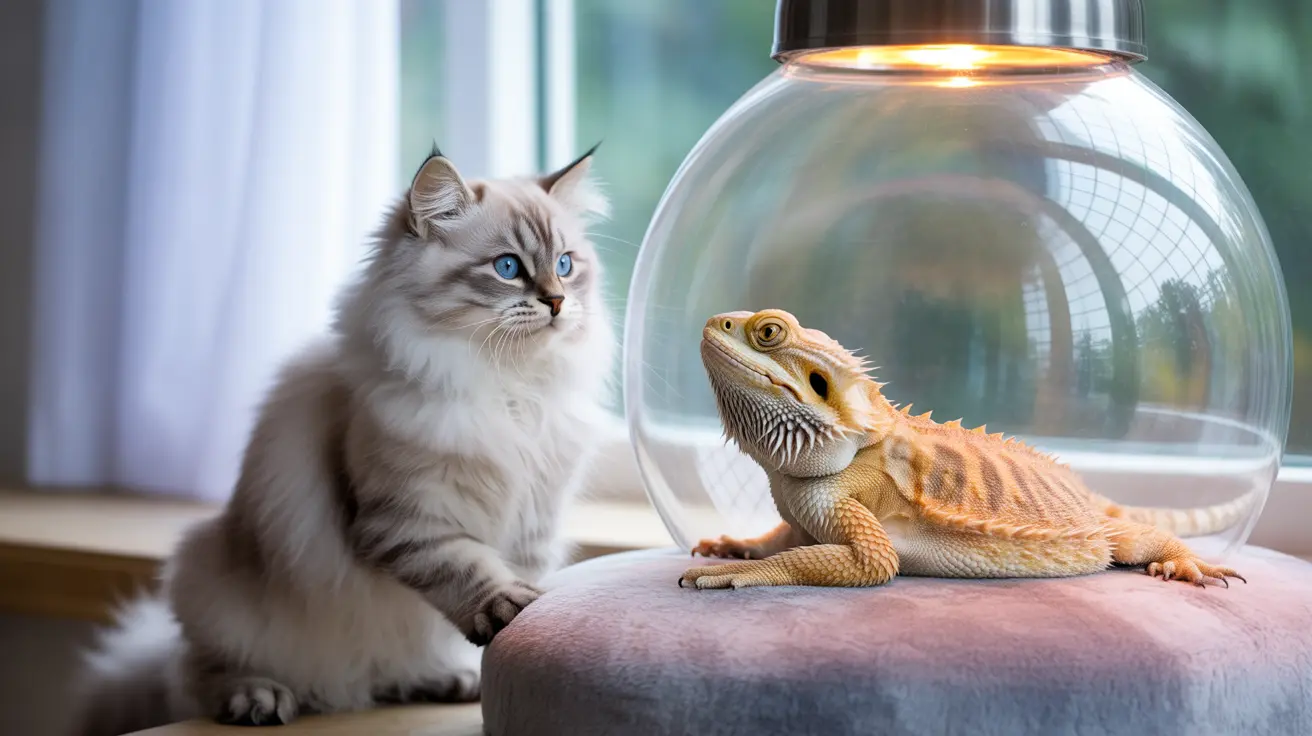If you're considering keeping both cats and bearded dragons as pets, you're likely wondering about their compatibility and safety concerns. While these unique pets can coexist in the same household, their relationship requires careful management and understanding of both species' needs. This comprehensive guide will help you navigate the challenges and create a safe environment for both your feline and reptilian companions.
Understanding Natural Behaviors and Risks
Cats are natural predators with strong hunting instincts, even when well-fed. These instincts can pose significant risks to bearded dragons, which are prey animals in the wild. Despite bearded dragons' generally calm and docile nature, the presence of a cat can cause them considerable stress, potentially leading to health issues.
Even friendly cats may view bearded dragons as toys or prey, making supervised interaction crucial. The size difference between these pets also creates an inherent risk factor, as adult bearded dragons typically reach 16-24 inches in length, making them vulnerable to cat attacks.
Creating a Safe Living Environment
The key to successful cohabitation lies in proper housing and separation. Bearded dragons require a secure, escape-proof enclosure that cats cannot access. A minimum 40-gallon tank with a sturdy, lockable lid is essential. Position the enclosure in a quiet area where cats cannot constantly stalk or intimidate the dragon.
Essential Enclosure Features:
- Heavy-duty screen top with secure locks
- Proper lighting and temperature gradients
- Multiple hiding spots and visual barriers
- Elevated position to prevent cats from looming over the tank
Managing Introductions and Interactions
If you decide to attempt supervised introductions, follow these safety guidelines:
- Start with barrier introductions through the tank glass
- Keep initial meetings brief and highly controlled
- Always maintain physical control of both animals
- Watch for signs of stress in either pet
- Never force interaction or leave them unsupervised
Health and Safety Considerations
Beyond physical safety, there are health considerations to keep in mind. Bearded dragons can carry bacteria like Salmonella, while cats may transmit various parasites. Maintain strict hygiene practices, including thorough hand washing between handling each pet and regular cleaning of their respective living areas.
Signs of Successful Coexistence
Positive indicators that your pets are adjusting well include:
- Calm behavior from both animals
- No aggressive stalking or hunting attempts by the cat
- Normal eating and basking patterns in the bearded dragon
- Minimal stress responses when in proximity
Frequently Asked Questions
Can cats and bearded dragons safely live together in the same household?
Yes, cats and bearded dragons can live in the same household when proper precautions are taken. This includes secure housing for the bearded dragon and never allowing unsupervised interaction between the pets.
What should I do to prevent my cat from harming my bearded dragon?
Use a secure, cat-proof enclosure for your bearded dragon, place it in a quiet area, and never allow unsupervised access. Provide your cat with plenty of enrichment to reduce interest in the dragon.
How can I introduce my cat to my bearded dragon without causing stress or injury?
Begin with barrier introductions through the tank glass, keeping sessions brief and controlled. Always supervise any interaction and watch for stress signals in both animals.
What are the best housing and enclosure requirements for a bearded dragon when living with a cat?
Use a minimum 40-gallon tank with a secure, lockable screen top. Include proper lighting, temperature gradients, hiding spots, and position the enclosure where cats cannot constantly monitor it.
Why is it dangerous to leave cats and bearded dragons unsupervised during interactions?
Cats have natural predatory instincts and may suddenly attack the bearded dragon, even if they've previously shown friendly behavior. Additionally, stress from cat presence can negatively impact the dragon's health.
Remember, while it's possible for cats and bearded dragons to coexist peacefully, their safety and well-being should always be your primary concern. With proper precautions and management, you can create a harmonious household for both your pets.






